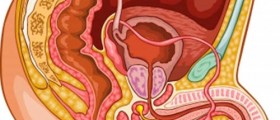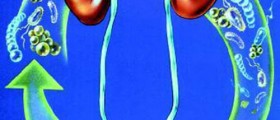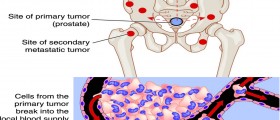Loading...
Loading...
Best of luck in your recovery.
Loading...
Would I do it again, yes, but I would have asked more questions and talked with more than one doctor that does HoLEP. I feel it was worth the time and expense. It just wasn’t perfect, but seldom are things the way one wishes them to be.
Loading...
Slow Flow rate is due to either blockage or pressure. The only way to find out is by doing a urodynamic. In which water is pumped into the bladder to measure pressure and flow rate. But I would not recommend it.
Loading...
U may want to do a Qmax test and get a numerical number for ur flow rate for future reference. The first followup after HoLEP visit is free. it includes a Qmax test. In this test, it is important to fill up the bladder and hold urine until one could not tolerate the pressure then urine.
Loading...
For people who have had HoLEP, please be on the look out for Urinary Tract Infections(UTI). Recently, I was nearly killed by UTI. Ecoli quickly overwhelmed my immune system. It then infected the kidney and other organs. Fortunately finally, saved by the powerful antibiotic, levaquin through IV.
Key info is given below:
“For generations, urinary tract infections, one of the world’s most common ailments, have been easily and quickly cured with a simple course of antibiotics.
But there is growing evidence that the infections, which afflict millions of Americans a year, mostly women, are increasingly resistant to these medicines, turning a once-routine diagnosis into one that is leading to more hospitalizations, graver illnesses and prolonged discomfort from the excruciating burning sensation that the infection brings.
Increasingly, E. coli is proving resistant not just to individual antibiotics, but also to a broad group of drugs known as beta-lactam antibiotics. These drugs share a way of attacking infection, and when a germ develops resistance to this method of attack, it eliminates several key treatment options all at once.
The drug ampicillin, once a mainstay for treating the infections, has been abandoned as a gold standard because it is so often resistant to multiple strains of U.T.I.s. Some urinary tract infections now require treatment with heavy-duty intravenous antibiotics. Researchers last year reported in a study that a third of all U.T.I.s in Britain are resistant to “key antibiotics.”
New research shows that one crucial path of transfer of germs that cause U.T.I.s is food, most often poultry. The consumed poultry winds up in a person’s gut and can get transferred through fecal residue to the urethra.
A study published last year by the American Society of Microbiology, funded partly by the C.D.C., found 12 strains of E. coli in poultry that matched widely circulating urinary tract infection strains. One of the study’s authors, Dr. Lee Riley, a professor of epidemiology and infectious diseases at the University of California, Berkeley, said he was working on a C.D.C.-funded project to determine whether the urinary tract infection needs to be classified and reported as a food-borne illness.”
Loading...
Could someone explain how it is possible “fecal residue” can be “transferred to the urethra”!
If u know how to reduced the chance of getting UTI, please post.
Loading...
What do you mean by "pressure" in the statement: Slow Flow rate is due to either blockage or pressure
Loading...
Pressure=bladder pressure and blockage=urethra diameter. That statement was made by Dr. Das, but is also common sense.
Loading...
However 2 things concern me:
1. My urine has a ( light ) pink tinge from time to time - although only when starting to pee.
2. When urinating I often ‘suffer’ from a delay for several seconds before the flow begins ( flow - whilst better than pre surgery - is not quite the speed / volume that certain patients claim ).
I am due to see my surgeon again in a few weeks time - can anyone reassure me that these are relatively standard symptoms that will gradually fade.
Any advice / experience would be very much welcomed - perhaps I am over thinking this?
Loading...
I would be concerned about urinary retention. I would expect UR to happen shortly after HoLEP, not 7 weeks after. Something is not right.
Suggest u call ur surgeon and discuss ur recovery with him and see what he thinks.
Loading...
Turns out I have a urethral stricture as a result of the Holep procedure ( 5% chance ).
Now await an Optical Urethrotomy - hopefully by the end of the month. I wonder if anyone has experienced this ‘procedure’? My research suggests:
1. Limited success & hence possible need to repeat?
2. Potential need to self catheterise? This worries the hell out of me - although I have seen it suggested that this be carried out intermittently ( weekly )?
Anybody experienced this procedure? Any observations gratefully received.
Loading...
I told u I was more concerned about the re-catheter. That concern seemed to be correct.
I am the unlucky 5% after HoLEP. One plus month After HoLEP, My flow fell from 20 to 2 cc/sec. I was most unlucky as the stricture caused UTI and I nearly died from sepsis infection.
Stricture is due to scar formation.
Ans 1: yes, after corrective surgery the recurrent rate is more 40% or more. U could google it.
The success rate for the corrective surgery depends on the length, the location and whether it is located in a blood vessel rich area. For , example, 1CM or shorter has a greater chance of success .
The low success rate caused me to be VERY VERY worried. Put me in a situation worse than before HoLEP.
My stricture was 1 CM. My corrective operation was in March about 4-5 months ago. The scar was in a form of a constricted wedding ring. A balloon was used to expand the ring and forced it to break the ring apart and fragmented the scar ring.
So far, visibly my flow has not decreased though I have not taken a flow rate test. As far as I can tell, the corrective operation was a success. So I may be lucky this time.
Ans 2: not self Catheterization. I asked my surgeon , who is quite famous in HoLEP, how many more times the re-occurred stricture could be operated on again. I did not get a good answer from him. But the problem is , as I understand it , seems to be after the first corrective operation, the scar could grows back because the tissue was injured during the corrective operation, , likewise for all successive operations. There is a final solution, however, It is call reconstructive surgery— rebuilt the penis.
I would suggest not to worry too much now and just see how the first corrective operation goes.
Before the surgery, the surgeon would not know what technique would be the best to use. During the procedural He has to go in to look to decide.
Good luck and hope the corrective operation will work out for u as well! Let us know what happens.
Loading...

















